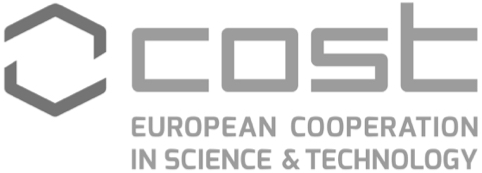- Indico style
- Indico style - inline minutes
- Indico style - numbered
- Indico style - numbered + minutes
- Indico Weeks View
CosmoVerse@Kraków
→
Europe/Warsaw
Kraków
Kraków
ul. Łojasiewicza 11
Description
CosmoVerse@Krakow (9 July - 11 July 2024) is the second annual conference in a series of conferences that aim to establish a link between the different research areas in cosmology with the main focus on challenges of tensions in cosmological survey data.
This conference is organized within the COST Action initiative CA21136 - Addressing observational tensions in cosmology with systematics and fundamental physics (CosmoVerse). Learn more about CosmoVerse action at https://cosmoversetensions.eu/
The first conference called CosmoVerse@Lisbon 2023 took place in Lisbon. All of the recorded talks and presentations are public at (https://cosmoversetensions.eu/event/first-cosmoverse-conference-cosmoverselisbon/)
The conference is organized together with Jagiellonian University in Kraków, and National Centre for Nuclear Research in Warsaw.
Main topics:
- Observational cosmology and Systematics (cross-correlation of data, systematic effects)
- Data analysis (astrostatistics; data science in astronomy; Bayesian analysis; machine learning and artificial intelligence)
- Fundamental Physics (challenge of the cosmological hypothesis, dark energy and modified gravity, neutrino physics, dark energy, and dark matter interaction)
** WARNING: Regarding hotel bookings: conference organizers HAVE NEVER AUTHORISED ANY COMPANY to send any requests regarding accommodation or travel. We strongly advise you NOT TO reply to any emails or calls from such companies and we do not accept any responsibility for adverse consequences should you choose to do so.
Your personal data is safe with us but note that just your name and affiliation appearing at the conference web page is sometimes enough for a scammer to find your contact information at your institute's web page. **
Invited speakers
Stefano Anselmi, INFN, Sezione di Padova, Italy
Ariel Goobar, Stockholm University, Sweden
Wendy Freedman, University of Chicago, USA (online)
Tanvi Karwal, Kavli Institute for Cosmological Physics, The University of Chicago, USA
Lloyd Knox, UC Davis, USA
Adam Riess, Johns Hopkins University, USA
Mairi Sakellariadou, King’s College London, UK
Venue:
The conference will take place in Kraków at Faculty of Physics, Astronomy and Applied Computer Science of the Jagiellonian University in the period 9 July - 11 July 2024.
Important dates:
2023 December 18th: Registration and abstract submission opens
2024 May 10th: Registration and abstract submission deadline
2024 July 9th-11th: Conference days
2024 July 10th Conference Dinner
2024 July 11th Public Lecture
(2024 July 12th MC meeting for the committee)


Participants
Adam Bac
Adam Zychowicz
Aditya Narendra
Adèle Poudou
Agnieszka Pollo
Aleksander Herzig
Aleksander Lenart
Alena Vanžurová
Alessandro Vadalà
Amare Abebe
Amel Durakovic
Amresh Verma
Anastasiia Untilova
Andrii Dzygunenko
Andrzej Hryczuk
Anna Wojtowicz
Antonio Ferreiro
Ariel Goobar
Arpita Misra
Athanasios Chatzistavrakidis
Benjamin Giblin
Biswajit Karmakar
Bozena Czerny
Carlos García Boiza
Chiara De Leo
Chul Chung
Clecio Bom
Daniela Grandon
David Benisty
David Mota
Davide Pedrotti
Dawid Chudy
Deng Wang
Denitsa Staicova
Dily Duan Yi Ong
Elena de la Hoz
Eleonora Di Valentino
Elsa Teixeira
Elvis Barakovic
Emmanuel Saridakis
Enrico Specogna
Erik Jensko
Evgeny Griv
Geraint Lewis
Giuseppe Fanizza
Gonzalo J. Olmo
Hareesh Thuruthipilly
I-Non Chiu
Ilim Irfan Cimdiker
Ippocratis Saltas
Ismael Ayuso
Ivan Dimitrijevic
J Alberto Vazquez
Jackson Said
Jacobo Asorey Barreiro
Jan Wierzbicki
Janusz Gluza
Joby Kochappan
Junhyuk Son
Jurgen Mifsud
Keduse Worku
Kishan Deka
Kostas Dialektopoulos
Leandros Perivolaropoulos
Lei Zu
Lilia Anguelova
Lindita Hamolli
Lloyd Knox
Luis Adrián Escamilla Torres
László Gergely
Maciej Bilicki
Magdalena Bochnak
Mairi Sakellariadou
Marcin Postolak
Marco de Cesare
Marek Biesiada
Margus Saal
Mariam Tarek Mohamed Abdelaziz
Mariana Jaber Bravo
Marie-Noëlle Célérier
Marika Asgari
Marina Cortes
Marine Samsonyan
Massimiliano Romanello
Mateusz Rałowski
Matilde Signorini
Maximilian von Wietersheim-Kramsta
Małgorzata Bankowicz
Melissa Amenouche
Michele Bosi
Micol Benetti
Minahil Adil Butt
Natascha Riahi
Nicoleta Voicu
Nihan Katırcı
Oleksandra Pyshna
Oliver Oayda
Ozgur Akarsu
PANAGIOTIS DORLIS
Patryk Liniewicz
Pawel Doruchowski
Rahul Shah
Rebecca Briffa
Richard I Anderson
Rishav Roshan
Ruchika Ruchika
Ruth Lazkoz
Saboura sadat Zamani
Salvatore Capozziello
Sebastian Szybka
Sebastian Trojanowski
Seunghyun Park
Sinah Legner
Siyang Li
Stefano Anselmi
Subhrata Dey
Tanja Petrushevska
Tanvi Karwal
Tobias Mistele
Tommaso Moretti
Tomo Goto
Unnikrishnan Sureshkumar
Upala Mukhopadhyay
Vincenzo Salzano
Vladislav Morozov
Wei-Ning Deng
Will Handley
William Giarè
Wojciech Hellwing
Young-Wook Lee
Youri Carloni
Ziyang Zheng
